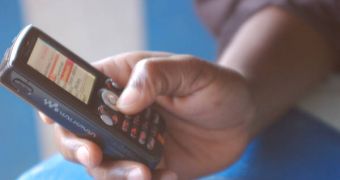In the near future, a newly developed piece of software for smartphones will allow users visiting ancient buildings to see what they looked like in their former glory, by just pointing the onboard camera at the structure. The software will automatically recognize the construction, and will display a picture showing the reconstructed version, or how it may have looked at the peak of its glory. Other useful information about it could also be displayed, the creators of the program say.
Behind this virtual-reality initiative is a vast consortium of European Union (EU) nations and technology companies, LiveScience reports. They argue that the “virtual time machine” they are currently perfecting could soon become the piece of software of choice for tourists around the globe, visiting some of the world's most famous ancient structures. Because the application will access a central database, new objects could be constantly added to the existing ones. Over time, this database could become the largest depository of ancient knowledge in the world, accessible via smartphones from any place that has mobile coverage.
The new technology has been named “Intelligent Tourism and Cultural Information through Ubiquitous Services” (iTacitus), taking after the name of the famed senator and historian of the Roman Empire, Gaius Cornelius Tacitus, who lived in the first and second centuries AD. The companies behind the new system say that it could bring a new dimension to museums, palaces, castles, and tourist attractions around the world, by implementing a new source of information, larger than the specific knowledge of any tourist guide.
Tourists “can look at a historic site and, by taking a photo or viewing it through the camera on the mobile device, be able to access much more information about it. They are even able to visualize, in real time, how it looked at different stages in history,” UK-based BMT engineering group scientist Luke Speller, who is part of the team that develops iTacitus, says. The new system's main tools are GPS receivers and image-recognition software, which work together to establish the location of the edifice being studied, and also to analyze specific elements in the ruins or artifacts.

 14 DAY TRIAL //
14 DAY TRIAL //